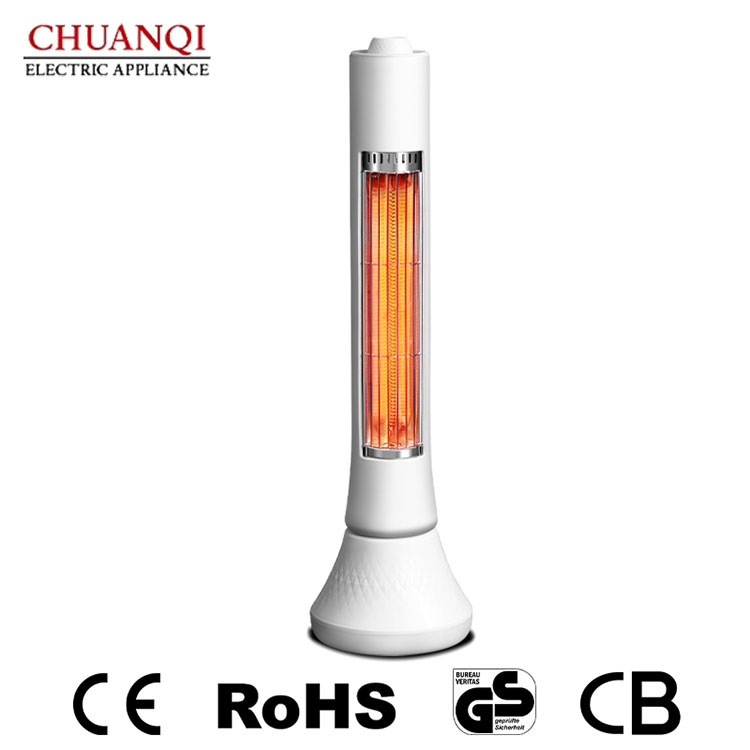Considerations for Choosing a Carbon Heater
2024-05-28
A carbon heater, also known as a carbon fiber heater or infrared carbon heater, is a type of electric heater that utilizes carbon fiber elements to produce infrared radiant heat. These heaters are known for their energy efficiency, safety, and ability to provide targeted warmth without heating the surrounding air.
Key Features
1. Carbon Fiber Elements:
- Efficient Heating: Carbon fiber elements emit infrared radiation, which heats objects and people directly without heating the air in between.
- Quick Heating: Provides rapid and even heating, with minimal warm-up time required.
2. Energy Efficiency:
- Focused Heating: Direct heating reduces energy waste by heating only the desired area, rather than the entire room.
- Zone Heating: Allows users to heat specific areas of a room, reducing overall energy consumption compared to heating the entire space.
3. Safety Features:
- No Open Flame: Carbon heaters do not produce open flames or emit harmful gases, making them safer than some other types of heaters.
- Cool to the Touch: The housing of carbon heaters remains cool to the touch during operation, reducing the risk of burns.
- Tip-Over Protection: Some models include safety features that automatically shut off the heater if it is accidentally tipped over.
4. Versatility:
- Portable: Many carbon heaters are lightweight and portable, allowing for easy relocation between rooms or outdoor spaces.
- Mountable: Some models can be wall or ceiling mounted for permanent installation, saving floor space.
5. Thermostat and Control Options:
- Adjustable Heat Settings: Most carbon heaters come with adjustable heat settings, allowing users to customize the level of warmth.
- Thermostat Control: Some models feature built-in thermostats for maintaining a consistent temperature.
- Remote Control: Certain models offer remote control functionality for convenient operation from a distance.
Applications
1. Home Heating:
- Living Spaces: Provides supplemental or primary heating for living rooms, bedrooms, and other areas of the home.
- Workshops and Garages: Offers targeted heating in workspaces where traditional heating systems may be impractical or inefficient.
2. Outdoor Heating:
- Patios and Decks: Keeps outdoor entertaining areas comfortable during cooler weather.
- Gazebos and Pergolas: Provides warmth for outdoor structures where traditional heating options are limited.
3. Commercial and Industrial Settings:
- Warehouses: Supplements existing heating systems to provide warmth in specific areas where workers are stationed.
- Retail Spaces: Offers localized heating in retail environments to keep customers and employees comfortable.
Considerations for Choosing a Carbon Heater
1. Size and Heating Capacity: Consider the size of the area you want to heat and choose a heater with an appropriate heating capacity.
2. Portability vs. Permanent Installation: Decide whether you need a portable heater or one that can be permanently installed.
3. Safety Features: Look for heaters with safety features such as tip-over protection and overheat protection.
4. Controls and Settings: Determine if you prefer manual controls, thermostat control, or remote control functionality.
5. Energy Efficiency: Check the energy efficiency rating of the heater to ensure it meets your energy-saving goals.
Leading Brands and Models
1. Dr. Infrared Heater: Known for its high-quality infrared heaters with advanced features and safety certifications.
2. Heat Storm: Offers a range of portable and wall-mounted carbon heaters suitable for residential and commercial use.
3. Duraflame: Produces infrared heaters designed for indoor and outdoor heating applications, including models with customizable heat settings.
4. Lifesmart: Provides energy-efficient carbon heaters with remote control operation and programmable timers.
5. HeatMax: Specializes in commercial-grade infrared heaters for industrial and commercial heating needs.
Maintenance Tips
1. Regular Cleaning: Keep the heater clean by wiping down the exterior with a damp cloth and removing any dust or debris from the heating elements.
2. Inspect Cords and Plugs: Check the power cord and plug for any signs of damage, and replace them if necessary to prevent electrical hazards.
3. Store Properly: When not in use, store the heater in a dry and well-ventilated area to prevent moisture buildup and potential damage.
4. Schedule Inspections: Periodically inspect the heater for signs of wear or damage, and have it professionally serviced if needed to ensure safe operation.
Carbon heaters offer efficient and targeted heating solutions for various indoor and outdoor applications, providing warmth where it's needed most while minimizing energy consumption. Whether for residential, commercial, or industrial use, choosing the right carbon heater involves considering factors such as size, features, and safety considerations to ensure optimal performance and comfort.



